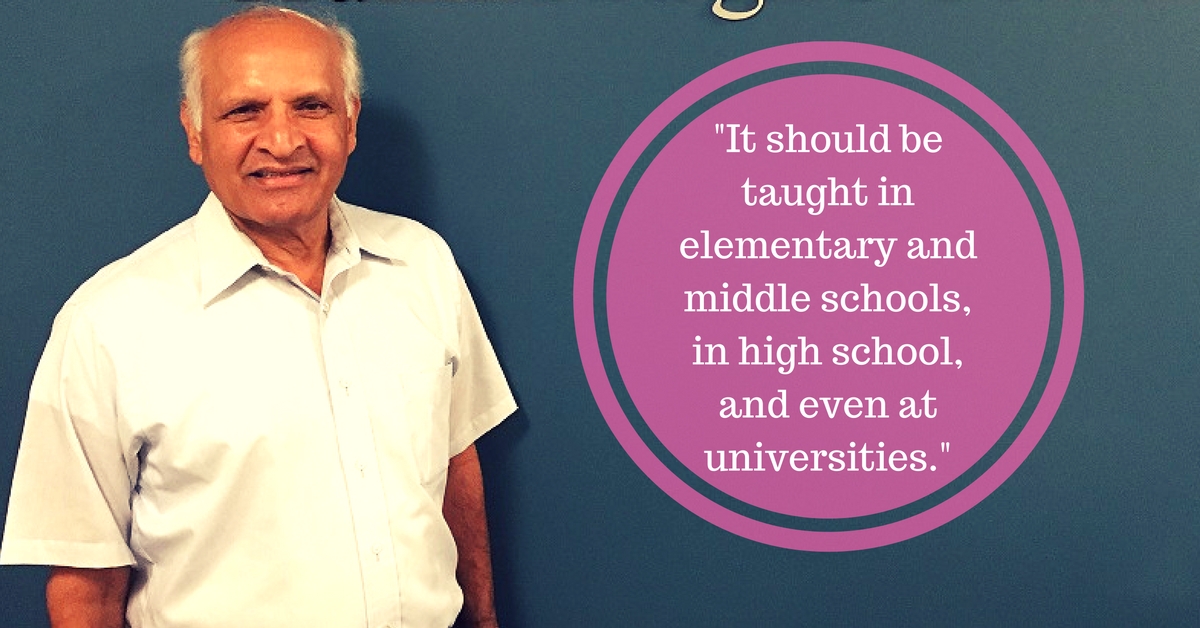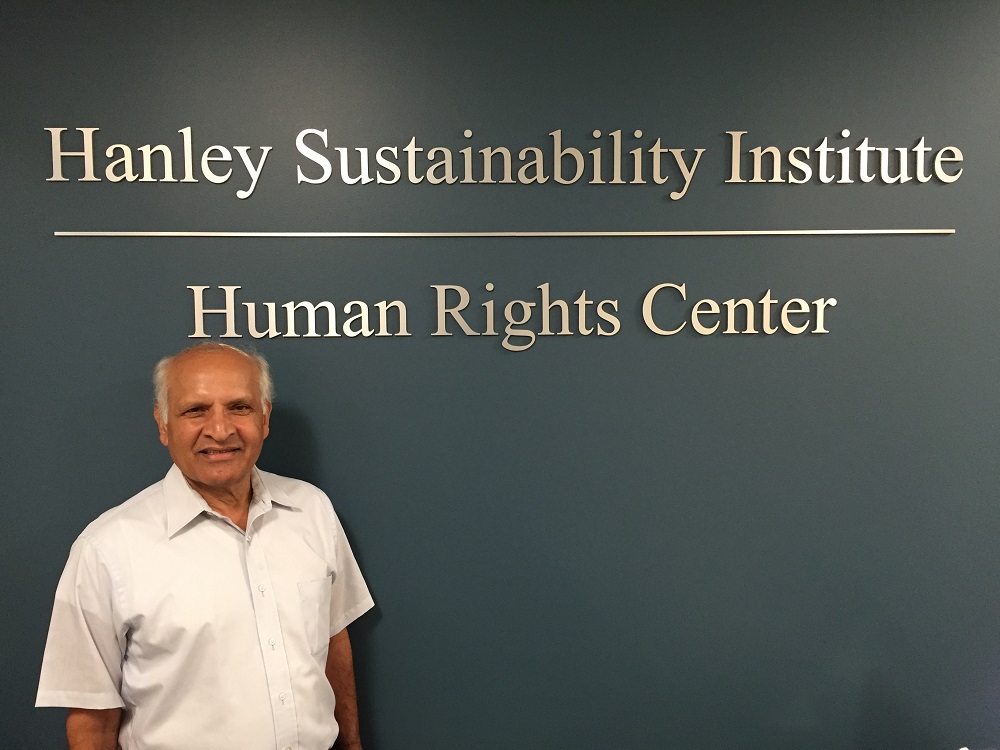Why This Indian Researcher in the US Teaches Non-Violence to His Students
Shawn Robinson writes about Binod Kumar's inspiring journey as a researcher and a teacher of non-violence.

A 7,836-mile detour led a former University of Dayton research engineer with more than 100 research publications and 15 patents, to the University of Dayton Human Rights Center — to start another journey to stamp out violence.
In the midst of his 34-year-long career as a researcher at the University of Dayton Research Institute, Binod Kumar’s annual trip to his native country India to visit his family in 2002 was much different.

His family warned him not to divulge any details about his visit because his hometown was simply too violent and dangerous.
But there’s one detail he talks about now that changed his life – a trip to Vaishali, long considered the birthplace of democracy and peace and nonviolence movements. Buddha, who preached compassion, love, and wisdom, also built a monastery there.
“The administration of that part of India at that time (2002) was known as ‘jungle raj (kingdom).’ Kidnapping, murder and rape were rampant,” Kumar said. “But a friend took me to Vaishali, about 20 km from my birthplace. He made a comment that the philosophy of nonviolence was shaped here. I started thinking ‘if the philosophy of nonviolence began here, why is there so much violence?'”
Kumar asked himself what happened to the virtues of nonviolence and thought, “maybe I should do something about this.” He sought researchers who could help him understand the nonviolence movement. He started an endowment at the University in 2005 to fund nonviolence education and worked with the College of Arts and Sciences to bring speakers to campus to spread the gospel of nonviolence. “At the time, I had no idea what ‘education in nonviolence’ meant, and how it would be implemented,” he said.
Until there was yet another detour! “I was talking to Paul (Benson, College of Arts and Sciences dean at the time) and mentioned that I would be retiring from the Research Institute soon, and would be happy to contribute my time to help move nonviolence education at the University of Dayton forward.”
But after retiring from the Research Institute in 2014, Kumar quickly went from simply “contributing time” to being appointment as a human rights fellow in the University of Dayton Human Rights Center. He started teaching a course on nonviolence.
As a fellow, Kumar continues his intellectual curiosity into the causes of violence, which he defines as the “intent and act of doing harm.” Put simply, the causes of violence, he says, are money, ego and power. But there are many roots — natural (drought, famine, climate change); social (religion, race, gangs, social media); political (flawed democracy, terrorism, criminal justice system); business (pollution, slavery, trafficking); and technology (global warming, and radicalization and hate campaigns through social media).
“After the Orlando shootings, I read news reports about the horrific violence. It was linked to a spectrum of causes — Islam, ISIS, anti-LGBT bias, guns, politics and anti-Hispanic bias. To me, it was simply an act of gruesome violence perpetuated by a lone person. If we want to prevent violence, the focus of remedial measures should be on that person,” Kumar said. “People want to give it different names, but violence is violence. And we are getting distracted from the roots of it, and we are not addressing it properly.”
So what do we do?
“Teach nonviolence to prevent violence,” an animated Kumar said. “It should be taught at the family level. It should be taught in elementary and middle schools, in high school, and even at universities. “As the causes of violence, simply put, are often money, ego and power, the promoters of nonviolence are, also simply put, nurture, culture and education.”
After two years in the Human Rights Center, Kumar said he’s still enjoying this work and being in the classroom. He plans to continue showing students everything they do in their life or profession — business, engineering, politics, etc. — affects the equilibrium between violence and nonviolence.
“The second job is to show people the connection between human rights and their chosen field,” Kumar said. “Every time there’s a human rights violation, there’s some form of violence in one way or another, whether physical, emotional or plain verbal abuse.” Kumar will keep on fighting for the good of the human race.
“When can we claim success? That’s a huge question. Violence is associated with the evolution of the human race. Let’s accept that. I think what we can do is minimize it so the human race can advance and prosper,” he said. “If violence continues to be too much, the progress of the human race will be impeded.”
(Written by Shawn Robinson)
For more information, contact Shawn Robinson at [email protected]. You can contact Binod by writing to him at [email protected].
Like this story? Or have something to share? Write to us: [email protected], or connect with us on Facebook and Twitter.
NEW: Click here to get positive news on WhatsApp!
If you found our stories insightful, informative, or even just enjoyable, we invite you to consider making a voluntary payment to support the work we do at The Better India. Your contribution helps us continue producing quality content that educates, inspires, and drives positive change.
Choose one of the payment options below for your contribution-
By paying for the stories you value, you directly contribute to sustaining our efforts focused on making a difference in the world. Together, let’s ensure that impactful stories continue to be told and shared, enriching lives and communities alike.
Thank you for your support. Here are some frequently asked questions you might find helpful to know why you are contributing?


This story made me
-
97
-
121
-
89
-
167











